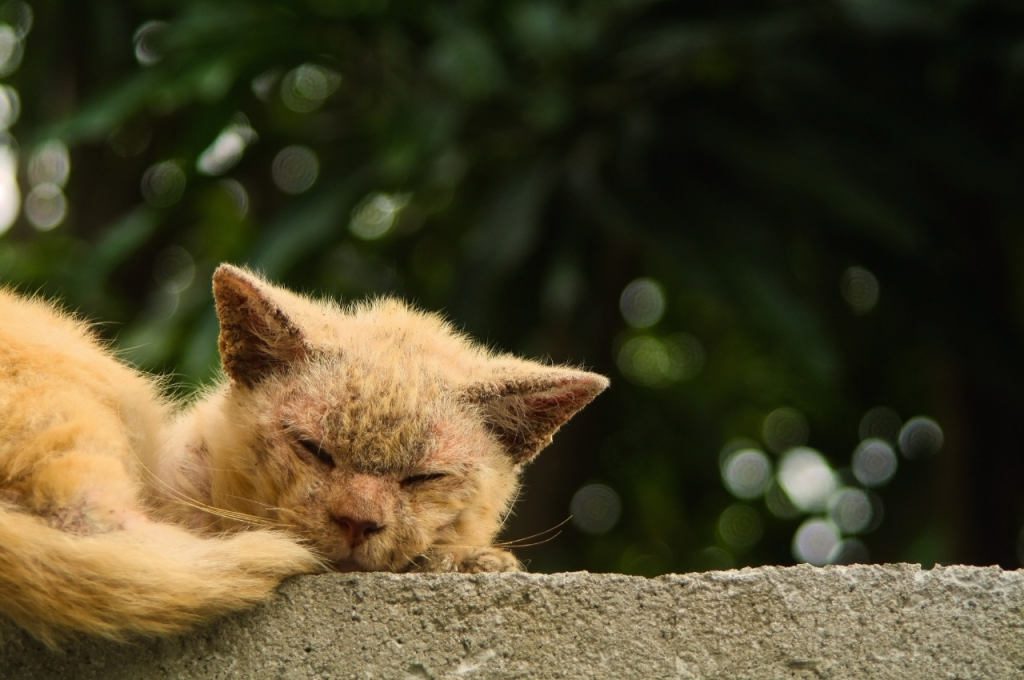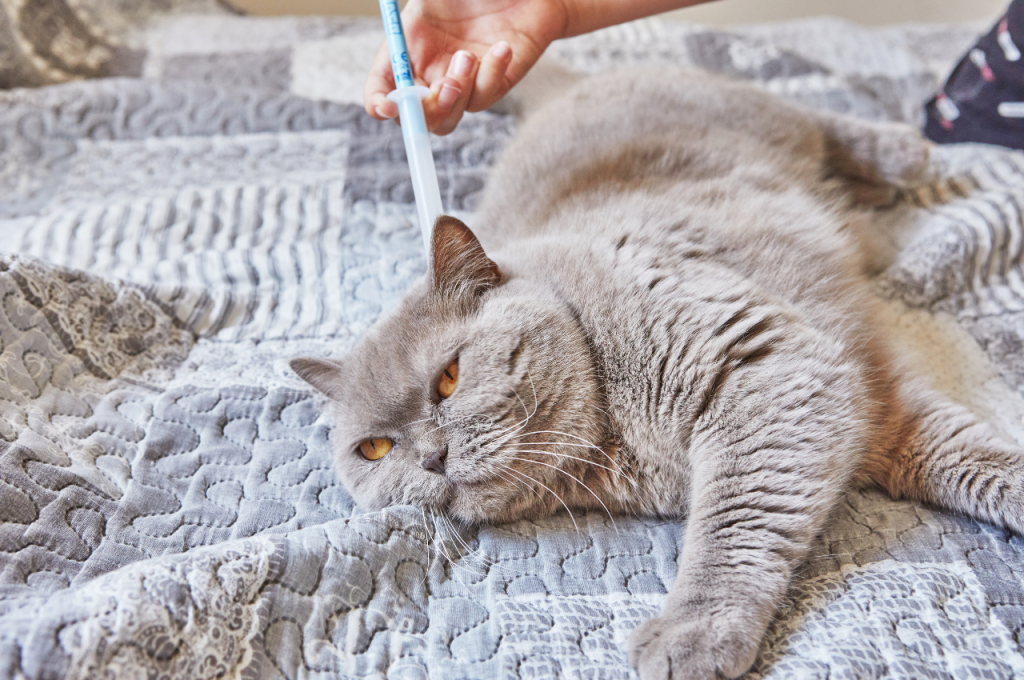The deadliest disease for cats is feline infectious peritonitis (FIP). FIP is a viral infection caused by a type of coronavirus that attacks the immune system and organs of cats, often leading to a fatal outcome.
This disease is highly contagious and can affect cats of all ages, but it is more commonly seen in kittens and cats with weakened immune systems. FIP can present with various symptoms, including fever, weight loss, lethargy, and fluid accumulation in the abdomen or chest. Unfortunately, there is currently no cure for FIP, and treatment options are limited to managing the symptoms and providing supportive care. Early detection and prevention through vaccination and maintaining a clean environment are crucial in reducing the risk of FIP in cats.
Introduction To Feline Health Risks
Keeping your cat healthy involves understanding the potential risks they face. Cats can be susceptible to various diseases, some of which can be deadly if not addressed promptly.

Common Misconceptions About Cat Diseases
- Cats don’t need regular vaccinations.
- Indoor cats are immune to diseases.
- Cats can’t catch illnesses from other animals.
Importance Of Awareness For Cat Owners
Being aware of common cat diseases can help owners detect symptoms early and seek proper treatment. Regular vet check-ups are crucial for maintaining your cat’s health.
Historical Perspective On Cat Diseases
Evolution Of Feline Health Threats
Throughout history, cats have faced a range of health threats that have evolved alongside their domestication. From ancient times to the modern era, feline health has been influenced by various factors including environmental changes, human interaction, and the spread of infectious diseases.
Major Outbreaks And Their Impact
Cats have experienced major disease outbreaks that have had significant impacts on their populations. The spread of diseases such as feline panleukopenia, feline leukemia, and feline immunodeficiency virus (FIV) has led to widespread mortality and morbidity among feline communities, shaping the course of feline health over time.
Identifying The Deadliest Disease
Criteria For Disease Severity
When it comes to identifying the deadliest disease for cats, several criteria are used to assess the severity of feline illnesses. The most critical factors include the fatality rate, impact on the cat’s quality of life, and the availability of effective treatment options.
Comparison With Other Feline Illnesses
In comparison with other feline illnesses, the deadliest disease for cats must have a significantly higher fatality rate and pose a severe threat to a cat’s overall well-being. Unlike less severe illnesses, the deadliest disease often presents limited treatment options and can lead to rapid deterioration in the cat’s health.
Feline Leukemia Virus (FeLV): A Silent Killer
Feline Leukemia Virus (FeLV) is one of the most lethal diseases that can affect cats. Despite its name, FeLV is not a form of cancer but rather a retrovirus that weakens the immune system and leaves cats vulnerable to other infections and diseases. FeLV is often referred to as a silent killer because symptoms may not become apparent until the disease is in its advanced stages. This makes it crucial for cat owners to be aware of the transmission, symptoms, prognosis, and management of FeLV.
Transmission And Symptoms Of Felv
FeLV is primarily transmitted through close contact with infected cats, such as mutual grooming, bite wounds, and sharing food/water bowls. Kittens can contract the virus from their infected mothers during pregnancy or through nursing. Symptoms of FeLV can vary and may include weight loss, lethargy, anemia, and recurring infections. Some cats may not show any symptoms at all, making regular testing essential for early detection.
Prognosis And Management
The prognosis for cats with FeLV depends on various factors, including their overall health and the stage at which the disease is diagnosed. While there is no cure for FeLV, supportive care and management can help improve a cat’s quality of life. This may involve treating secondary infections, providing a balanced diet, and minimizing stress. Cats with FeLV should be kept indoors to reduce the risk of spreading the virus to other felines.
Feline Immunodeficiency Virus (FIV)
Feline Immunodeficiency Virus (FIV) is a serious disease that affects cats’ immune systems.
Understanding Fiv’s Long-term Effects
FIV weakens the cat’s immune system over time, making them more susceptible to infections.
Living With An Fiv-Positive Cat
Ensure your FIV-positive cat lives indoors to reduce exposure to potential illnesses.
Feline Infectious Peritonitis (FIP): A Rising Concern
Feline Infectious Peritonitis (FIP) is a concerning disease for cats, often considered the deadliest. It is caused by a coronavirus and can be fatal. FIP is a rising concern among cat owners due to its severe impact on feline health.

Feline Infectious Peritonitis (FIP) is a viral disease that affects cats worldwide and is caused by a feline coronavirus. FIP is one of the deadliest diseases for cats, and it is a rising concern for cat owners and veterinarians alike. FIP affects cats of all ages, but it is most prevalent in young cats under the age of two. There are two forms of FIP: wet and dry. The wet form is more severe and progresses more rapidly than the dry form.
Nature And Progression Of Fip
FIP is a complex disease that is difficult to diagnose and treat. The virus that causes FIP is very common, and most cats will be exposed to it at some point in their lives. However, only a small percentage of cats that are exposed to the virus will develop FIP. The disease is caused by a mutation of the coronavirus, which causes the virus to attack the cat’s immune system. The virus can attack various organs in the cat’s body, including the liver, kidneys, and brain. The symptoms of FIP can vary widely, but they usually include fever, weight loss, and lethargy. As the disease progresses, the cat may develop fluid buildup in the abdomen or chest, which can lead to difficulty breathing and other complications.
Advancements In Treatment Options
Unfortunately, there is currently no cure for FIP, and treatment options are limited. However, there have been some advancements in recent years that have given cat owners and veterinarians hope. One of the most promising treatments is an antiviral drug called GS-441524. This drug has been shown to be effective in treating cats with FIP, and it has saved the lives of many cats who would have otherwise succumbed to the disease. In addition to GS-441524, there are other treatments that can help manage the symptoms of FIP. These include steroids, antibiotics, and draining the fluid buildup in the cat’s body. While these treatments cannot cure FIP, they can help improve the cat’s quality of life and prolong their lifespan.
In conclusion, Feline Infectious Peritonitis (FIP) is a rising concern among cat owners and veterinarians. The disease is caused by a mutation of the coronavirus and can attack various organs in the cat’s body. While there is currently no cure for FIP, there have been some advancements in treatment options that have given cat owners and veterinarians hope. With ongoing research and development, there is a possibility that a cure for FIP may be discovered in the future.
Preventative Measures And Vaccinations
The deadliest disease for cats is feline infectious peritonitis (FIP), a viral disease that can be fatal. Preventative measures include regular vaccinations and maintaining a clean living environment to reduce the risk of exposure to the virus. Vaccinations play a crucial role in protecting cats from this deadly disease.
Core Vaccines For Cats
Core vaccines are vital to protect cats from deadly diseases.
Lifestyle Changes To Prevent Disease
Implementing lifestyle changes can help prevent diseases in cats.
Understanding And Managing Chronic Conditions
Cats can develop various chronic conditions that can significantly impact their health and quality of life. It’s crucial for cat owners to recognize the signs of common diseases and take proactive steps to manage them effectively.
Dealing With Kidney Disease
Cats with kidney disease require a specialized diet low in phosphorus.
Heart Disease In Cats
Regular veterinary check-ups are essential to monitor heart health in cats.
Support And Resources For Cat Owners
Cat owners can find support and resources to combat the deadliest disease for cats, which is feline infectious peritonitis (FIP). FIP is a viral disease that affects cats of all ages, making it crucial for cat owners to stay informed and seek veterinary care for their feline companions.
As a cat owner, it’s essential to understand the deadliest diseases that can affect your feline friend. However, even with this knowledge, it’s still crucial to have a support system in place should the worst happen. This article will explore some of the resources available to cat owners who may need assistance during difficult times.
Local And Online Support Communities
One of the best resources for cat owners is local and online support communities. These communities consist of other cat owners who have experienced similar situations and can offer advice, support, and encouragement. They can be an excellent source of comfort during difficult times and can help you make informed decisions about your cat’s health. Local support groups can be found through your veterinarian, local animal shelters, or social media platforms. Online communities, such as forums or Facebook groups, are also great places to connect with other cat owners. These communities are often moderated by experienced cat owners or veterinarians, ensuring that the information shared is accurate and helpful.
When To Consult A Veterinarian
It’s essential to know when to consult a veterinarian. If your cat displays any symptoms of illness, such as lethargy, vomiting, or diarrhea, it’s crucial to seek medical attention immediately. Additionally, if your cat has been exposed to other sick cats, it’s essential to monitor their health closely. Some of the deadliest diseases for cats, such as feline leukemia virus (FeLV) and feline immunodeficiency virus (FIV), can be asymptomatic for years before causing severe illness. Regular check-ups with your veterinarian can also help detect any health issues early on, giving your cat the best chance of recovery. Your veterinarian can also provide additional resources and support should your cat become ill.

In conclusion, as a cat owner, it’s crucial to have a support system in place should the worst happen. Local and online support communities can provide advice, support, and encouragement during difficult times. Knowing when to consult a veterinarian and scheduling regular check-ups can also help detect any health issues early on, giving your cat the best chance of recovery.
Prioritizing Feline Health
Prioritizing feline health is crucial to combatting the deadliest disease for cats, which is feline infectious peritonitis (FIP). Recognizing symptoms early and regular vet check-ups can help prevent this fatal illness from affecting your beloved feline companion.
The Role Of Ongoing Research
Research plays a vital role in understanding and combating feline diseases. Keeping up with the latest findings can help in early detection and prevention.
Creating A Safer Environment For Cats
Eliminating hazards like toxic plants and ensuring a stress-free environment are crucial. Regular vet check-ups and vaccination schedules are essential for feline well-being.
Conclusion
It’s vital for cat owners to be aware of the deadliest diseases that can harm their pets. Feline infectious peritonitis (FIP) is one such disease that has a high mortality rate and is currently incurable. However, with early detection, proper treatment, and preventive measures like vaccinations, cat owners can minimize the risk of their feline friends falling prey to these deadly diseases.
Regular veterinary check-ups and maintaining a clean and healthy environment for cats can also go a long way in keeping them safe and healthy.
